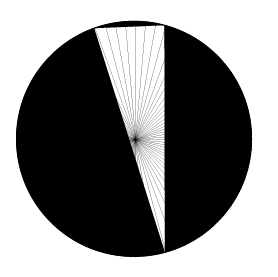
EXTRACT FROM REVIEW OF AGAINST THE SMART CITY BY ADAM GREENFIELD
The “smart city” idea treats spaces generically. It does the same thing (makes the same mistake) with time, technology and populations: “in the just-so stories we’re told about the smart city, the technology of everyday life advances, but everything else somehow magically remains the same. From family size and structure to work arrangements to the conception of the self, everything proceeds as though sequestered, serenely untouched by the radical discontinuity in the technics of the daily.” It views the city as a set of values and beliefs that are somehow universal and unchanging; that would have failed to predict that The Bowery could become home to world class architecture, that systems can be affected by fads, fashions, and other factors beyond technological progress, or that communities can and will shift and mutate. In fact it is this last assumption - the dismissal of the role of urban populations to be anything beyond teachable statistics - that makes up the crux of Greenfield’s argument, as he asks who - beyond IBM, Siemens, Cisco et al - the smart city is really for.
For Greenfield, the tech provider’s commercial imperative to pander to the potentially oppressive policies of city and state governments leads to the most disturbing aspects of the brave new smart city. He points to promotional material for the “Intelligent Operations Center built by IBM for the city of Rio de Janeiro, a $14 million facility that fuses data from weather stations, traffic cameras, police patrols, sewer-mounted sensors and social-media postings into a synoptic, war room-style overview...[that] will help municipal governments ‘monitor and manage city operations pro-actively [sic] and...respond rapidly and effectively to emergencies.’ But the specific ‘emergencies’ contemplated in the case of Rio de Janeiro apparently include demonstrations by favela residents for their own right to autonomy and self-determination...IBM’s own materials specifically contemplate the use of the Center’s capabilities, instead, to guide favela pacification operations, going so far as to suggest ‘Which streets will require the most troops?’ as a question an administrator may wish to submit for computational consideration.”
Greenfield hammered this point home most effectively during his New Museum talk with a series of slides from recent uprisings and protests - Tahrir Square in Cairo, Taksim Square in Istanbul, Zucotti Park in New York - all urban spaces that held host to events that are fundamentally incompatible with the smart city philosophy, and that it would, by its own definition, attempt to quash as unprecedented examples of the very kind of chaos and disruption it is designed to negate. The smart city may not have been conceived as an intentionally oppressive tool, but in its eagerness for some kind of idealised, unobtainable efficiency it attempts to reduce citizens to generic, agency-less statistics - and hands unscrupulous regimes the tools to clamp down on any citizen’s attempts to prove otherwise.
Extract from "We’re listening to Adam Greenfield speak AGAINST THE SMART CITY", Arc Magazine Oct 2013